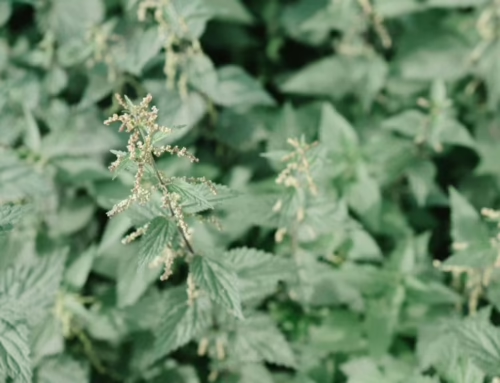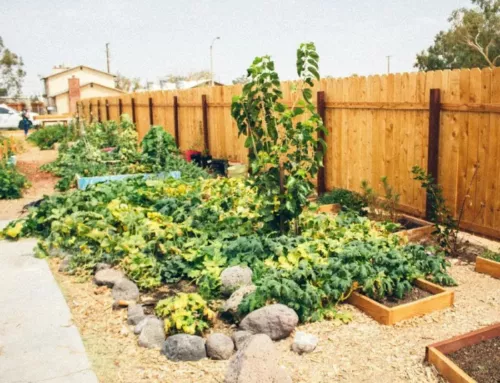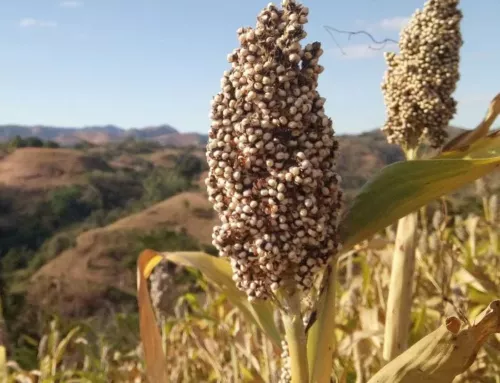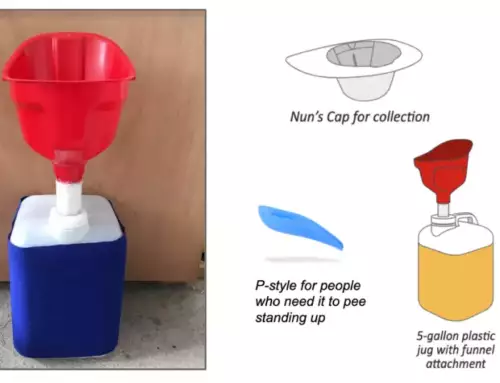The Real Climate Change Mitigating Diet
By Caro Roszell, NOFA/Mass Education Director
Lately there has been a lively discussion about what diet best combats climate change across a range of mainstream and social media platforms.
Every major food movement—from vegetarianism to fortified grains to the organic movement—is motivated by the conjoined aspirations of better health and a more ethical diet. Yet movements are fueled by proclamations short enough to fly on banners, and—as with every endeavor involving the intersection of human infrastructure and the broader ecosystems in which we live—reality refuses to be condensed to a slogan.
With climate change rapidly becoming the irrefutable issue of our time, the food movements are seeking to hang the banner of “climate change solutions” on their castles. But who has the right to claim this flag?
The argument put forth by vegan organizations typically claims that meat-eaters are responsible for significantly more dietary-related greenhouse gas emissions than vegetarians and vegans. Some, (for example, this opinion piece by PETA) go further to argue that organic livestock emit even more methane than factory-farmed animals.
On the other side of the debate, a pro-regenerative grazing Facebook group recently sparked an active and ongoing discussion on their page by asserting that only livestock farming can be considered greenhouse-gas negative, and that no form of crops production can sequester more carbon than its production emits, regardless of farming practices.

It is not what you eat or where it was grown, it is how it was grown that matters.
Meanwhile, this recent article from Our World In Data took on the local food movement, arguing that too much emphasis is placed on food miles, when what people should really care about is whether the ingredients in their meals cause high or low greenhouse gas (GHG) emissions in the course of production. This article stands solidly in the pro-vegetarian camp, finding that
“producing a kilogram of beef emits 60 kilograms of greenhouse gasses (CO2-equivalents). While peas emit just 1 kilogram per kg. Overall, animal-based foods tend to have a higher footprint than plant-based. Lamb and cheese both emit more than 20 kilograms CO2-equivalents per kilogram. Poultry and pork have lower footprints but are still higher than most plant-based foods, at 6 and 7 kg CO2-equivalents, respectively. “
What all of these arguments lack in common is a soils-eye view of food production. The article quoted above, much like the veggie-versus-meat debate, does not take into account the complexities of farming practices. Food can be grown degeneratively (losing soil carbon, causing soil erosion, reducing biodiversity, and polluting groundwater), sustainably (holding soil organic matters stable in the soil and not contributing to biodiversity loss or watershed pollution) or regeneratively (sequestering soil carbon in the form of soil organic matter, enhancing water storing and cleaning capacity, and enhancing biodiversity). The difference between degenerative and regenerative farming is how well the farmers care for the complexity of the living things in the soil—the fungi, the bacteria, the insects and other life forms.
Or, stated another way, it is not what you eat or where it was grown, it is how it was grown.
Eric Toensmeier writes in The Carbon Farming Solution (page 12) that on average, cultivated soils lose 30-50% of their carbon stocks after being cultivated for 50 years (and it takes only 10 years in tropical climates to lose that same percentage). What Toensmeier means by ‘cultivated soils’ are tilled soils—ploughed, harrowed, and prepped soils. Tillage breaks up soil structure and causes temporary increases in bacterial access to stored forms of carbon, releasing some of that carbon as CO2 – but the biggest issue is that tillage reduces populations of arbuscular mycorrhizal fungi (AMF) in the soil. Plants make (carbon rich) sugar (aka carbohydrates, C6H12O6) and oxygen (O2) from CO2 and water through the magic of photosynthesis. AMF form associations with the roots of most plants (as long as they’re allowed to flourish in the soil) and take a portion of that sugar from the plant roots in exchange for nutrients the plant can’t access without the help of the fungi.
The fungi support plant growth, allowing the plants they associate with to grow larger, photosynthesize more, and therefore convert more CO2 to C6H12O6. Meanwhile, the AMF uses some of that sugar to grow, but some of it is sequestered in the soil as glomalin, a carbon-rich fungal glue that has a range of benefits for soil including helping to create soil aggregates.
Interestingly, in a study of fungal response to CO2 concentrations, researchers found that arbuscular mycorrhizal fungi multiplied their growth by 3x, and increased glomalin production by 5x when CO2 levels were increased to 670 ppm. Glomalin is 30-40% carbon and persists in soil for anywhere from 7-40+ years depending on soil management practices. So, essentially, fungi increased their carbon sequestration activity in response to elevated CO2 levels.
Pro-fungal, regenerative cropping strategies have been shown to sequester significant amounts of carbon in the soil. In fact, the USDA’s 4 Soil Health Principles are all principles that tend to reduce harm to arbuscular mycorrhizal fungi (AMF) in the soil and enhance the diversity and growth of AMF.
4 Soil Health Principles
- Minimize soil disturbance (reduce tillage)
- Keep the soil covered (mulching, cover cropping, tarping)
- Maximize days in living plant cover (cover cropping, intercropping, relay cropping)
- Maximize biodiversity (plant species, insect life, and animal integration)
The most powerful aspect of the local food movement is not that it cuts down on food miles (which the Our World in Data article correctly points out is not as significant as the GHG emissions of production practices), but the fact that when food is local, you almost always have the ability to find out more about how that food was produced. Some farms are open to visitors and many have public trails and roads along their fields where you can get some fresh air and also get to know the farm’s practices season-by-season. CSA farms are often especially welcoming to customer interest in practices, due to their deeper commitment to a direct customer relationship with the farm. But even with non-CSA farms it is usually possible for you to talk to the farmer or the crew and explore their commitment to soil stewardship.
Practices to look out for to determine a farm’s commitment to soil health (based on the 4 Soil Health Principles)
- Is the land usually cover cropped and/or mulched? Do you see a lot of bare soil whenever you pass the farm, or dust clouds over the land?
- What is the color of the soil? Darker soils are richer in soil carbon/ organic matter.
- Has the land been cut into swales and berms and/or planted with hedgerows to prevent erosion, or is it just a big wide-open field?
- Are there wildflower buffers for native insect habitat?
- If there are livestock, are they out on open pastures, and are they moved regularly though the landscape or are they knee-deep in mud or housed in buildings with no access to the outdoors?
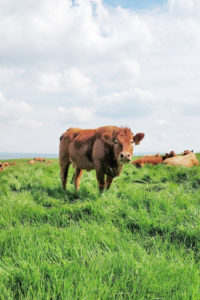
Some research suggests that rotational grazing
increases carbon in the soil
As for the debate about whether the vegan diet or a diet rich in animal products has the smallest carbon footprint—again, it’s really not about plant-based foods versus animal products, it’s about how the food was raised. Some research suggests that rotational grazing increases carbon in the soil, both on long-term pastures (study conducted in Michigan- temperate soils) and when pasture is planted to replace tilled crops fields (study conducted in Brazil- tropical soils). However, not all research concludes that management-intensive or rotational grazing increases soil carbon, and again, the nuances of specific management practices come into play. For instance, studies on pastures and grasslands have shown that plant species diversity plays a strong role in soil carbon sequestration, and research also suggests that the length of time that the animals spend in each paddock has a strong effect on sequestered carbon as well.
While there is some compelling research pointing to the potential of grazing to restore soil carbon, the unfortunate reality is that “grass-fed” beef –while doubling every year in its share of the meat market—still only accounts for 4% of the total US market—and the “grass-fed” label is not a meaningful one, for several reasons. First, as of 2016 there is no longer a USDA standard to back the USDA “grass-fed” label—but even when there was such a standard, there were no on-site inspections to verify claims made by producers seeking approval to use the label. Secondly, even more stringent third-party “grass-fed” labels or the “grass-finished” label do not mean that intensive rotational grazing practices were used to produce that meat—only that the animals were raised on grass. The research is clear that achieving carbon gains is challenging even under high-density rotational grazing; on the flip side, overgrazing decreases soil organic carbon stocks, producing erosion and reduces soil ecosystem services.
So, if you want to be certain that the animal you’re eating has been raised in a manner that’s likely to sequester soil carbon, you really need to know more about your farmer’s particular management practices.
Vegans and vegetarians who are interested in a climate-friendly diet should also look into the growing practices at the source of their food. There are many ways that crops (grains, legumes, soy, etc.) and vegetables can be grown regeneratively (through practices like tillage reduction, compost additions, intercropping, cover crop rotations, and rotating grazing animals through cover crops as a part of the crop rotation). But currently these practices are not the norm. If you’ve heard of the Great Dustbowl, then you have heard of a time when aggressive tillage from crops farming nearly created a desert in what was once one of the most fertile places in North America. Tillage destroyed the soil organic matter of those farms, releasing a portion of the soil’s carbon as CO2 and eliminating the soil’s capacity to absorb and hold water. When a drought occurred, the depleted soils, lacking the resilience provided by a healthy web of life, dried out and blew away in giant dust storms, with some topsoil settling on the decks of ships in the Atlantic.
While we have so far avoided another Dust Bowl, the long-term impact of crop production still largely trends toward degenerative. So, using your local-food access powers and thinking like a fungi, talk to farmers in your area about what they’re doing to take good care of the life in their soils. Are they fungi-friendly farmers?
Of course, not everyone has access to local farms or stores that prioritize transparency about farming practices, and it’s rare for anyone to be able to eat food only from such sources. When faced with the anonymity of big-brand food products, it can be helpful to consider the data on generalized farming practices as they relate to GHG emissions. As we know from the data published by Our World in Data, industrial meat production has the greatest carbon footprint of industrial foods, with beef production being by far the highest emitter with over 60kg of greenhouse gas emissions per kg of beef produced. This is partly because of industrial manure management practices, but in large part it is due to the climate impact of clearing and tilling land to grow industrial GMO corn, soy and other feedlot crops to feed the cows we eat.
According to a 2013 article, It’s Time to Rethink America’s Corn System (Scientific American) 40% of corn grown in the United States went to produce biofuels with another 36% going to feed livestock (the remainder is exported or used for alcohol and processed ingredients like corn syrup). And of the 76 million acres planted to soy production in the US, over 70% was fed to livestock (USDA). While we at NOFA/Mass certainly don’t advocate eating GMO corn and soy products, it’s important to realize that eating industrial beef and dairy products contributes to far more land being put into those industrial row crops than eating them directly. As stated in the Scientific American article cited above,
The average Iowa cornfield has the potential to deliver more than 15 million calories per acre each year (enough to sustain 14 people per acre, with a 3,000 calorie-per-day diet, if we ate all of the corn ourselves), but with the current allocation of corn to ethanol and animal production, we end up with an estimated 3 million calories of food per acre per year, mainly as dairy and meat products, enough to sustain only three people per acre.
Luckily, even in fairly limited-choice scenarios the non-meat foods are usually not limited to only corn and soy products. Nuts, fruits and vegetables are relatively low-GHG snack options (though probably not low pesticide options) even when the sourcing is unclear.
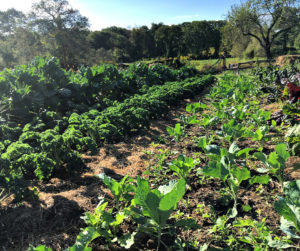
There are many ways that crops and vegetables can be grown regeneratively through practices like tillage reduction
Finally, it’s never too late to learn to grow a garden at home or in a local community garden. NOFA conferences and local gardening groups are a good way to get started, and classic books on mulch-based gardening like Ruth Stout’s 1970s classic, the No-Work Garden Book can help new gardeners build soil, keep back weeds, skip labor-intensive double-digging, and avoid common beginner mistakes.
So, to recap– if you want to eat in a manner that helps to ameliorate climate change, the diet is as follows:
- Learn the principles of carbon-sequestering farming and how they relate to your local ecosystem.
- Seek localized knowledge of your foodscape and get to know your local food producers.
- Choose foods that derive from the production systems that you are confident enhance biodiversity, support the work of arbuscular mycorrhizal fungi, and put carbon back in the soil.
- Prepare that food with love, and savor knowing how it was grown and the name of the farmer who is better able to keep stewarding that land because of your support.
To learn more about carbon sequestering food production, you can:
- Attend a NOFA/Mass On-Farm Event: we have a variety of seasonal farm tours and on-farm workshops including two Soil Health Field Days each growing season as a part of our NRCS Conservation Innovation Grants program. Events are posted at www.nofamass.org/events and on our NOFA/Mass Facebook Page.
- Attend our Soil Health Track at the 2020 NOFA Summer Conference. Our theme this year is Climate Solutions are Grown in Soil. Our Keynote Speaker is Tim LaSalle, Co-Founder of the Center for Regenerative Agriculture at Chico State University. We have tracks on both farming and gardening and workshops on raising animals, perennials and annual crops.
- Search for a farm near you that has taken the Sustainability Pledge on The Organic Food Guide
- Attend our Soil Health Track at the 2021 NOFA/Mass Winter Conference
- Check out our free media:
- Check out our resource page – nofamass.org/carbon
- And of course, the best way to learn is by doing– grow your own!
Readers: We received a response and some resources from our friend Karl Thideman at Soil 4 Climate that describes the distinction that advocates of Holistic Planned Grazing make between HPG and the kind of grazing that is widely studied in the current literature which we refer to in this article. We wanted to share some of his comments with you for further reading and to continue the conversation. These are the views and opinions of Karl Thideman of Soil 4 Climate, any questions on the material can be directed to [email protected] :
“A key source of confusion in the discussion as to whether Holistic Planned Grazing achieves superior results in terms of its ability to heal degraded soil, restore wildlife habitat, improve water and food security, increase resilience to drought and floods, and sequester carbon, is the fact that much of the published research that allegedly studied Holistic Planned Grazing actually didn’t.
Sheldon Frith explores this topic by closely examining the grazing protocols utilized in approximately 20 studies claiming to be on Holistic Planned Grazing, then comparing them to the protocol described by Allan Savory.
In direct opposition to the conclusion reached by Heidi Hawkins, PhD, in her meta-analysis, Frith’s more thorough analysis finds the protocols that most closely resembled Holistic Planned Grazing sequestered the greatest amount of carbon.
Why do many grazing researchers claim to be studying Holistic Planned Grazing when, in fact, they’re not?
Hawkins’ 2017 Meta Analysis of Holistic Planned Grazing Should be Retracted – Sheldon Frith
http://www.regenerateland.com/hawkinss-2017-meta-analysis-of-holistic-planned-grazing-should-be-retracted/
Resources:
- Jason Rowntree, PhD, of Michigan State University emphasized during his keynote address at the recent Vermont Grass Farmers Association conference that Stanley 2018, of which he is a co-author, did not study Rotational Grazing; it studied Adaptive Multi-paddock Grazing, aka Holistic Planned Grazing.Here is an interview with the co-authors of Stanley 2018.
Sustainable Dish Episode 60: Adaptive Multi-Paddock Grazing with Paige Stanley & Jason Rowntree http://sustainabledish.com/podcasts/sustainable-dish-episode-60-adaptiv…As Texas A&M’s Richard Teague, PhD, discusses in this presentation, Adaptive Multi-Paddock Grazing is the term he coined as a substitute for Holistic Planned Grazing, because [start at 4:20], “There’s a lot of scientists who really go freaky when you mention Allan Savory.”
Regenerative Agriculture Seminar – Dr. Richard Teague With Q&A – CSU Chico Media (2017, 1 hr. 32 mins.) http://media.csuchico.edu/media/t/0_3bfb9gsmHere is Allan Savory making the distinction between Rotational Grazing and Holistic Management (2014, 2 mins.) … http://youtu.be/9aqOAz1wIuo
Holistic Planned Grazing has been shown to build topsoil faster than any other means of which I am aware, in excess of 1”/25 mm per year. It is worth noting that no one expects this formation rate would continue indefinitely. I would also point out that I have not yet seen any data showing how fast topsoil can be formed using the Biologically Enhanced Agricultural Management (BEAM) system utilizing fungal-rich compost, as pioneered by David Johnson, PhD, of New Mexico State University.”
Questions about this response? Contact Karl Thideman, Soil 4 Climate

